Leeks offer wonderful flavor to soups and meals. But you’ll need to cut leeks before using them. There are two parts to leeks, the green leafy tops, and the tender white, yellow inside part.
Leeks are used very rarely and definitely not as much as their more popular cousins. Why is this? Probably because leeks are seen as difficult to prepare and cook.
We hope after reading this and seeing how easy it is to prepare and freeze leeks they will justifiably become a more frequent visitor to your kitchen.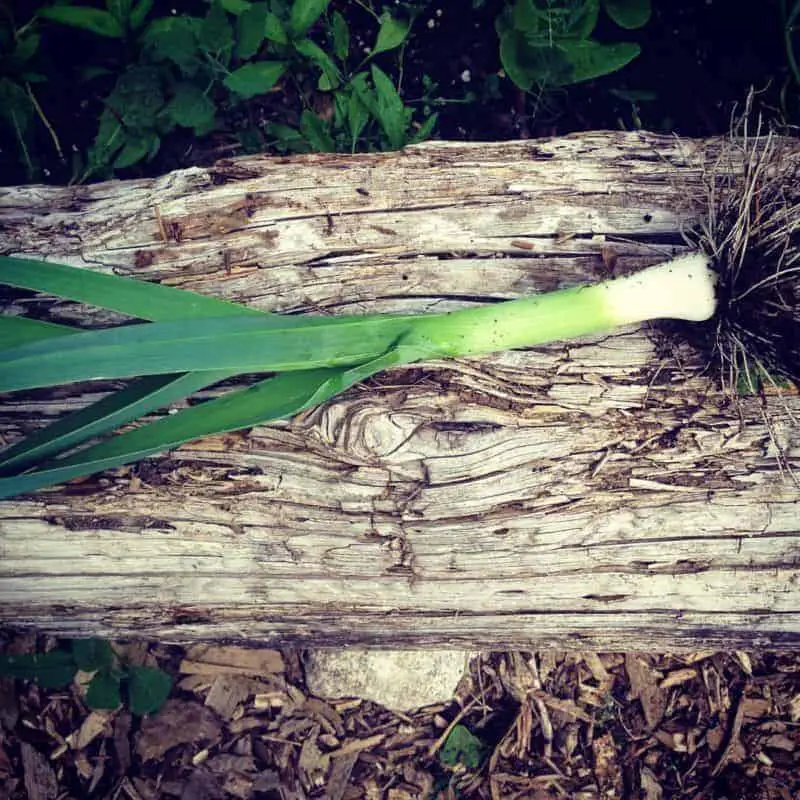
What are Leeks?
Leeks are a wonderful vegetable that tend to have a delicious mild sweet oniony flavor and they have a range of health benefits.
They have a long growing season and are readily available.
Leeks are from the same family as onion and garlic, which are extremely popular in all cooking and used on an almost daily basis in most kitchens.
There are two parts to leeks, the green leafy tops and the tender white, yellow inside part.
Even though the whole plant has that great leek flavor, most recipes only call for the white tender part.
The dark green leek tops (the leek greens) are very chewy and not very palatable. You can dehydrate the greens into a leek powder.
How to Cut Leeks
When you buy leeks most will be whole leeks and still have the roots at the bottom. They definitely will if you grow them yourself!
You can’t eat the whole leek so you’ll want to discard or compost this part (you can plant them into some soil, as some leek roots will re-grow).
And we’re not going to freeze whole leeks so you will need to chop them some more.
Here’s how you cut leeks:
- Cut off the roots at the base, roughly about 1 inch from the stem.
- Trim off the excess green stems about an inch or so above the white part. Where the greens are darker and start to create different layers is where the plant starts to get chewy. Discard or compost the roots and leek tops (unless you plan on dehydrating them). You can also use the leek tops to make your very own leek oil.
- You should be left with the white bulb and a short section of pale green stem.
Like onions, leeks have many layers
- The outside layer of the stem will also be too chewy to eat. It’s the center part that you’ll want to cut up for use.
- Make a cut down the length of the stem to cut them in half and then discard the outer stem layer (the same way the outside layer of onions get discarded).
How to Clean Leeks
Some leeks are very dirty in the center because they were ‘hilled up’ during the growing period.
This means soil was added up the leek stem while it was growing to make it whiter instead of green.
Some leeks are very clean inside, others very dirty.
- If you cut them in half and there’s a lot of dirt, give them a rinse now but you might need to rinse more after cutting them into finer pieces.
- When you first cut them in half, give them a rinse in cold water while running your fingers between the layers to remove dirt. You want to end up with nice clean leeks to avoid any grittiness in your food so make sure they are rinsed well.
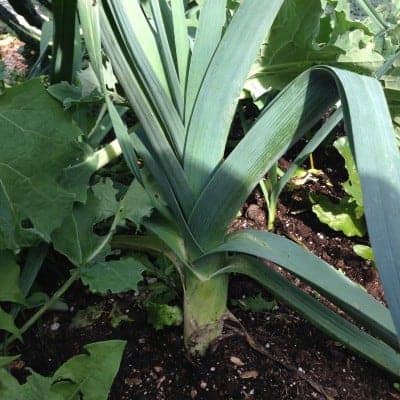
- A key part of the preparation is to cut the leeks now according to how they will be needed in your various recipes. Then when you want to use them they can go straight from the freezer into the pan.
- So if the recipe calls for small leek pieces cut the stem once more length-wise then finely cut into small pieces. After cutting again it’s better to rinse them some more in a bowl of cold water or with a colander.
- For something like a pot of soup that gets blended later, you can cut your leeks into larger pieces. Many recipes call for sautéing leeks first and are great in half moon pieces. Your preference might be to dice them even smaller.
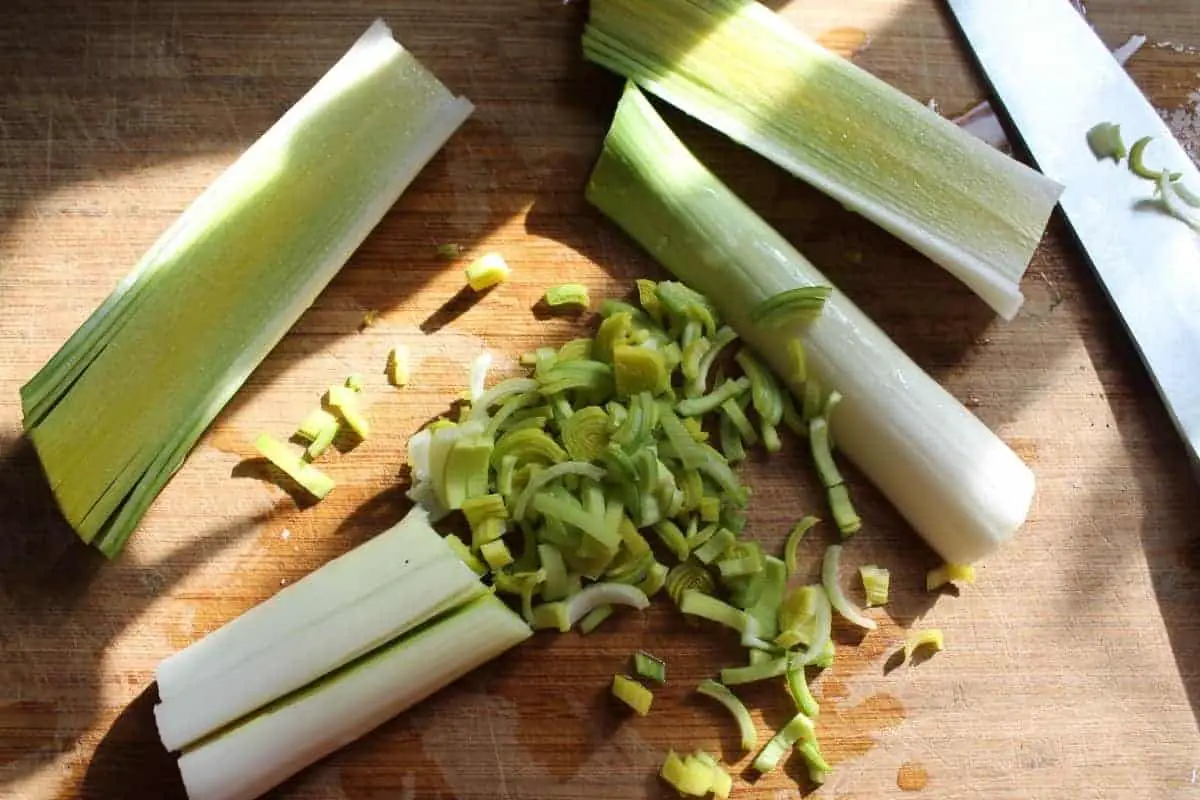
How to Freeze Leeks
Freezing leeks is super super easy. If you follow these steps you’ll have successfully frozen leeks every time and will be left with easy portions of frozen leeks ready to pop in to your dishes when it comes time to use them in your cooking. We will show you how to freeze leeks without blanching.
Flash Freeze Leeks
The best way to freeze your leeks and other vegetables is to flash freeze them. That’s freezing your leeks quickly.
Flash freezing maintains the cell structure of the food better. Commercial vegetable freezers, like Birdseye, can flash freeze them in seconds.
Unfortunately most of us don’t have access to things like liquid nitrogen or a commercial deep freeze to flash freeze leeks, so we have to do it the quickest way we can using a domestic freezer.
When you’re flash freezing leeks at home the trick is to spread the leeks out to again get as much air around them as possible.
This time you separate the leeks to expose them to the freezing temperatures so they freeze as quickly as possible.
The best way is to spread them out in a single layer on a baking sheet, preferably on some wax paper or parchment paper so they don’t freeze onto the metal surface of the baking sheet.
Then place the tray into the freezer for about an hour to flash freeze them until they start going solid.
While your leeks freeze, take a few minutes to grab your freezer safe container and/or freezer bags. And start marking them up with the date and contents.
It’s much easier to write on a freezer bag while it’s empty, and saves time to get your leeks back in the freezer for deep freezing after they have flash frozen.
Storing Frozen Leeks in the Freezer
Once they have flash frozen, quickly take your baking tray of frozen leeks out of the freezer and start putting them into the containers or freezer bags.
Now air is your enemy, so you want to use an airtight container or Ziploc bags with as much air removed as possible.
The best idea is to keep them in smaller portion sizes. They will continue to freeze better and if you need more than one portion when cooking you can just use more than one container or bag of frozen leeks.
That’s much easier than separating a bigger portion of frozen leeks if you only want a little.
Using Your Frozen Leeks
Now the time and attention you have put into preparing and freezing your leeks pays dividends.
When it’s time to start cooking and eating your delicious leeks it doesn’t get much easier.
People often ask if they need to defrost leeks before cooking. But because you have your leeks cut already there is no need to defrost them before cooking.
Simply remove your container or freezer bag of frozen leeks from the freezer, remove the still frozen leeks and pop them straight into your pan, pot or cooking dish.
The frozen leeks will defrost very quickly and then cook as normal.
That’s all there is to it. You did all the preparation to the leeks before you froze them so all the work is already done.
Can You Refreeze Leeks?
You may wonder if you can refreeze leeks. The simple answer is no.
In any case, and the beauty of freezing leeks this way, is that you should never have the need to refreeze them as you only take the leeks out when you need them and cook them straight away.
And if you do freeze leeks this way, in small portions, and in proper storage bags or containers then you will only take out exactly the amount you need.
So not only can you preserve all the leeks you buy or grow for up to a year, there is little or no wastage.
How to Blanch Leeks
Blanching isn’t cooking, it is heating for a very short time to soften the vegetables. The key is to do it quickly and to stop it quickly, too.
While not essential, a blanching basket and a large bowl of ice water will give you the best results. The blanching basket allows you to put the leeks in boiling water quickly and take them out quickly. The iced water cools the hot leeks quickly to stop them cooking.
So once you have chopped and rinsed your leeks here’s how to blanch leeks:
- Prepare a bowl of cold or ice water.
- Bring a large pot of water to the boil on a high heat.
- Place chopped leeks, in a blanching basket if you have one, into the large pot of boiling water and cover with a lid.
- Once the water comes back to the boil, leave in the boiling water for around 90 seconds until the leeks go a slightly darker, richer color.
- If you have a blanching basket, remove it from the boiling water with all the leeks and place them in the iced water. If you don’t have a blanching basket, a large slotted spoon or colander will do the trick. (Whichever utensils you use, the key is to remove the leeks from the boiling water and to cool the leeks as quickly as possible to stop the cooking process.)
- As soon as they have cooled off, remove the leeks from the cool water (not so much icy water anymore) ready for the next step.
Dry the Leeks
It’s important that before you freeze leeks they are as dry as possible. They will freeze better and last longer the drier they are.
So you need to remove any excess moisture to prepare the leeks for freezing.
Lay them out, on a paper towel if you like, or on a cake type rack to allow the water to drip off.
Turn them over, dap them with paper towel, move the leeks around and get as much air around them to remove excess water.
Leek Cooking Tips
Leeks taste wonderful if you sauté them in oil or butter as it brings out more flavor.
I love using sautéed leeks in a quiche, in a roast base or broth, or substituted for onions in dishes like spanakopita or any soup.
Leek and potato soup is also a classic, and is great blended or broth-based.
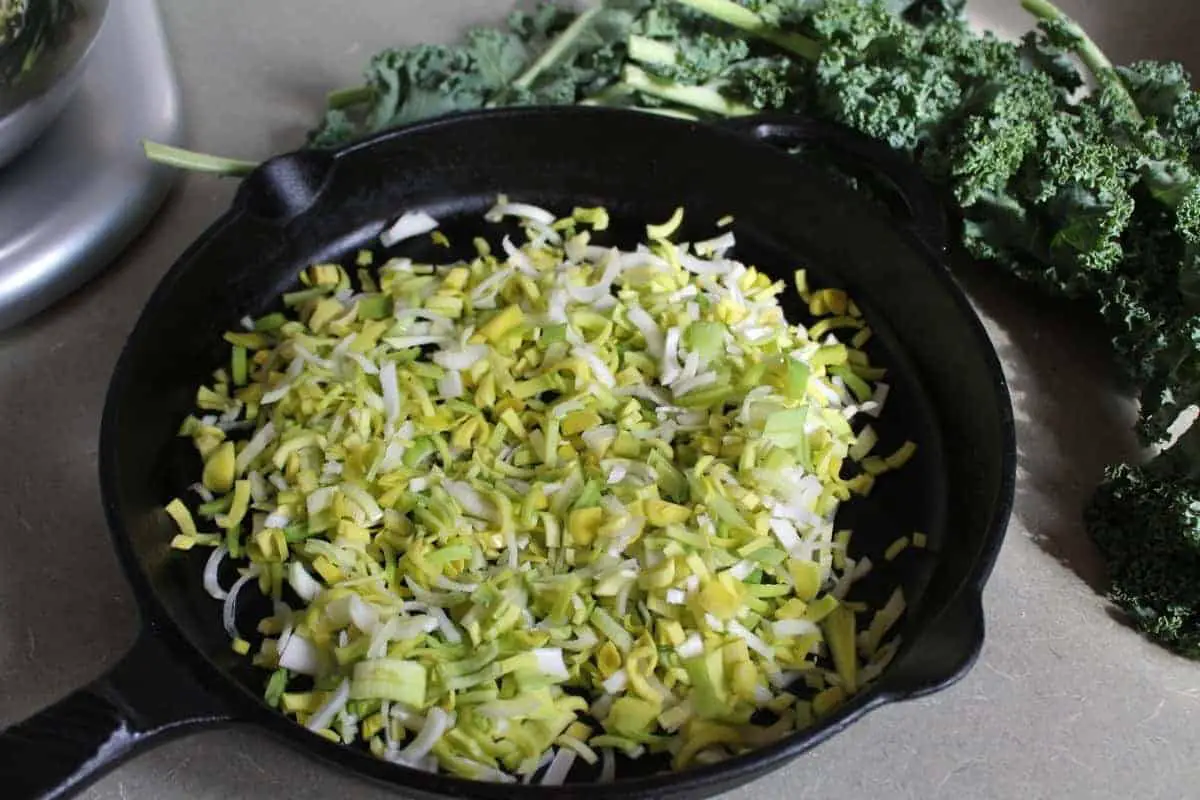
Summary
Hopefully, this has persuaded you to let leeks into your kitchen a little more often, and add something different to your cooking.
Because of leeks cold tolerance it’s one of my top crops for a fall and winter vegetable garden.
Yep, leeks can withstand cold temperatures and snow!

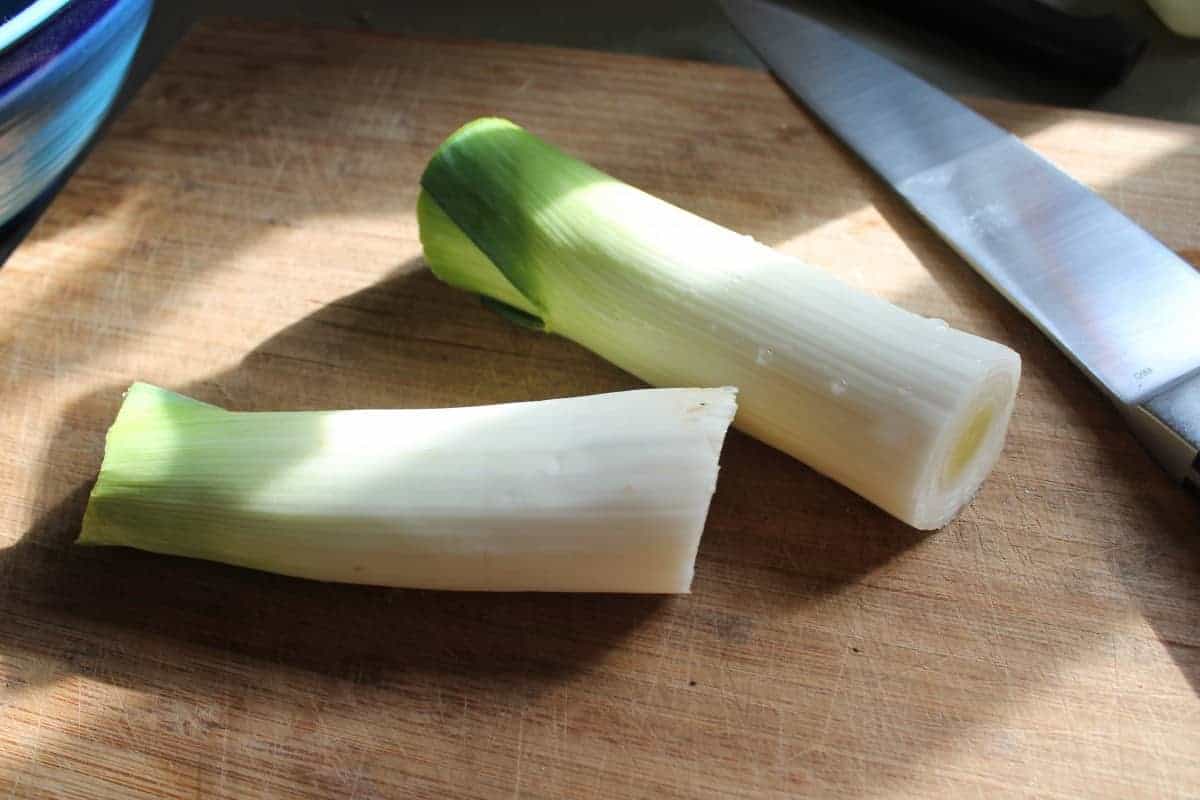
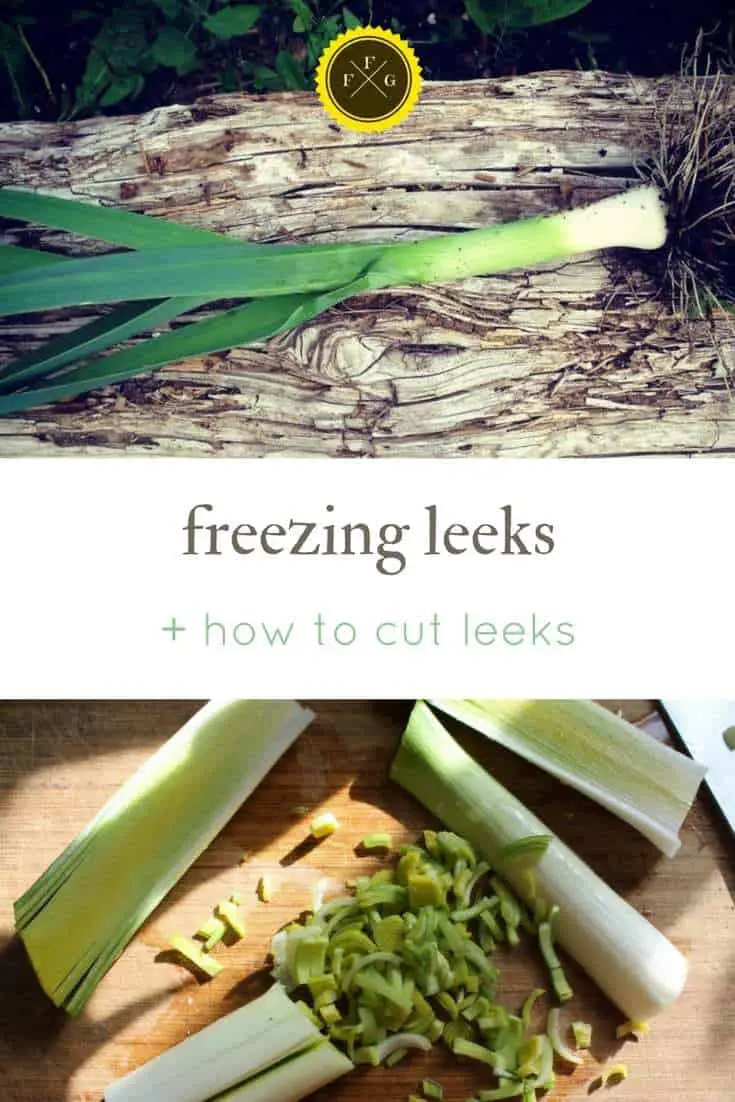

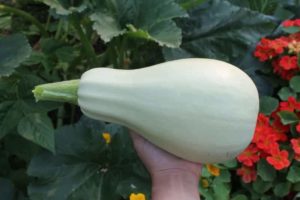
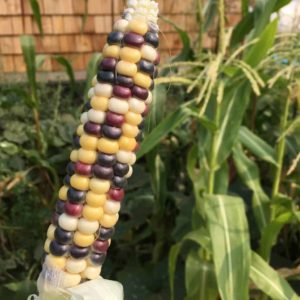
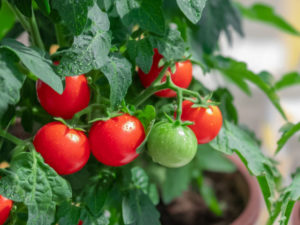
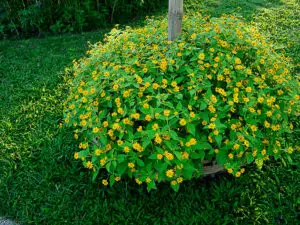
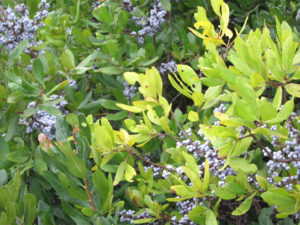
I use my salad spinner when prepping leeks. Works great for mushrooms, too!